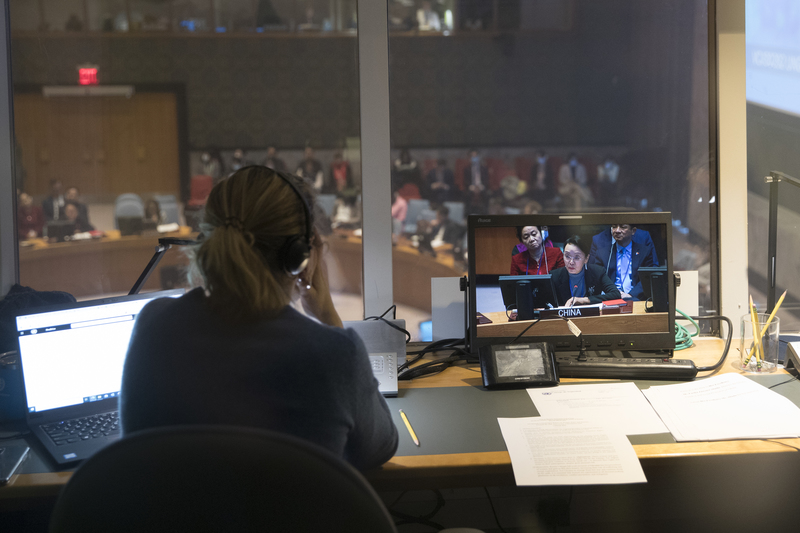As the global demand for professional interpreters continues to rise, remote interpreting certification exams have emerged as a flexible solution for candidates worldwide. However, the shift to virtual testing environments has introduced new challenges—chief among them, the need for robust technical mechanisms to prevent cheating. Unlike traditional in-person exams, remote settings lack direct proctor supervision, requiring innovative technological solutions to maintain exam integrity. This article explores the multi-faceted strategies employed to safeguard the authenticity of remote interpreting certifications, blending cutting-edge tools with systematic protocols.
Biometric Authentication: The First Line of Defense
At the core of remote exam security lies biometric identification, which ensures the test-taker’s identity aligns with registration records. Modern systems often integrate facial recognition technology, cross-referencing live video feeds with government-issued ID scans. For instance, some certification bodies use 3D facial mapping to detect anomalies such as mask substitutions or photo fraud. Iris scanning, though less common, offers an added layer of security, particularly for high-stakes exams where precision is non-negotiable. This technology not only verifies the candidate’s identity at the outset but also periodically rechecks during the exam to prevent impersonation.
Real-Time Proctoring: AI-Driven Surveillance
Gone are the days of static webcam monitoring. Contemporary remote exams employ AI-powered proctoring software that analyzes video and audio feeds in real time. These systems can detect suspicious behaviors like eye movements away from the screen, unusual head gestures, or the presence of unauthorized materials. For example, algorithms may flag sudden screen reflections (indicating a second device) or unusual audio inputs (such as whispered translations). Proctors, often assisted by AI alerts, can intervene promptly to address potential violations, balancing automation with human judgment. This dynamic surveillance ensures that interpreters are evaluated on their genuine skills rather than external aids.
Anti-Screening and Environment Control
Remote exams frequently use browser lockdown tools that restrict candidates from switching to other applications or accessing online resources. These tools disable keyboard shortcuts, block external links, and monitor screen activity to prevent unauthorized searches. Additionally, environmental scanning requires candidates to provide a 360-degree view of their testing space before the exam, ensuring no hidden notes, tablets, or recording devices are present. Some platforms even use audio analysis to detect background noises that might signal collaboration, such as multiple voices or the rustling of papers.
AI-Powered Language Analysis: Detecting Abnormal Patterns
Interpreting exams assess not only accuracy but also fluency and naturalness. AI systems now analyze speech patterns during the test to identify anomalies that may indicate cheating. For instance, sudden shifts in tone, unusual pauses, or robotic intonation could suggest the use of pre-recorded responses or real-time translation tools. Machine learning models, trained on thousands of authentic interpreting samples, can distinguish between genuine performance and scripted or aided responses. This technology adds a layer of scrutiny to the content itself, complementing visual and environmental monitoring.
Blockchain and Data Encryption: Securing Exam Records
To prevent tampering with exam results or transcripts, some certification bodies leverage blockchain technology to create immutable records. Each stage of the exam—from registration to submission—is timestamped and encrypted, ensuring transparency and accountability. This not only deters fraud but also provides candidates with verifiable proof of their credentials. Encryption protocols also protect sensitive data during transmission, safeguarding both the exam content and the candidate’s personal information from cyber threats.
Challenges and the Path Forward
While technical anti-cheating measures have advanced significantly, they are not without limitations. Privacy concerns often arise regarding the use of biometric data and continuous surveillance, requiring exam providers to balance security with ethical considerations. Additionally, candidates in regions with unreliable internet or limited technology access may face disparities, highlighting the need for inclusive solutions. Moving forward, the industry is likely to see more adaptive AI systems that learn from new cheating techniques, as well as hybrid models combining human proctors with intelligent tools.
In an era where remote certification is becoming the norm, the integrity of interpreting exams hinges on robust technical safeguards. By integrating biometrics, AI-driven surveillance, and secure data management, certification bodies can maintain the rigor of assessments while embracing the flexibility of virtual testing. As technology evolves, so too will the strategies to protect the authenticity of professional credentials—ensuring that qualified interpreters earn their status through genuine skill, not subterfuge.
Need reliable remote interpreting for exams or global projects? Artlangs Translation fuses technical tools with linguistic skills for accurate interpreting results. Connect with us for customized services.











